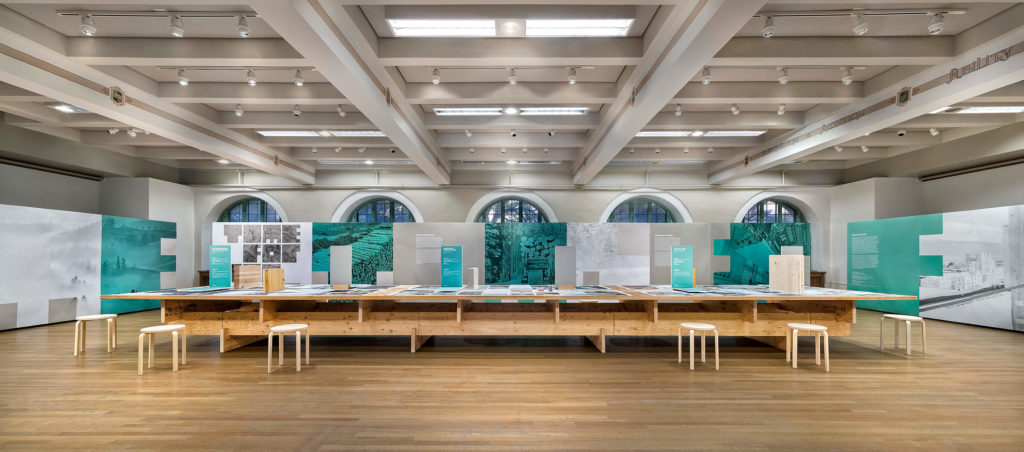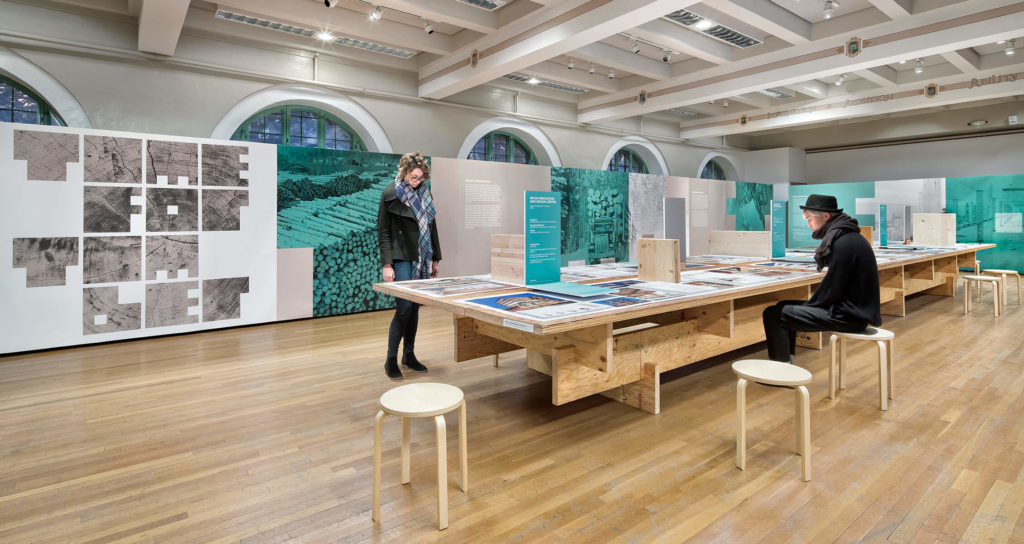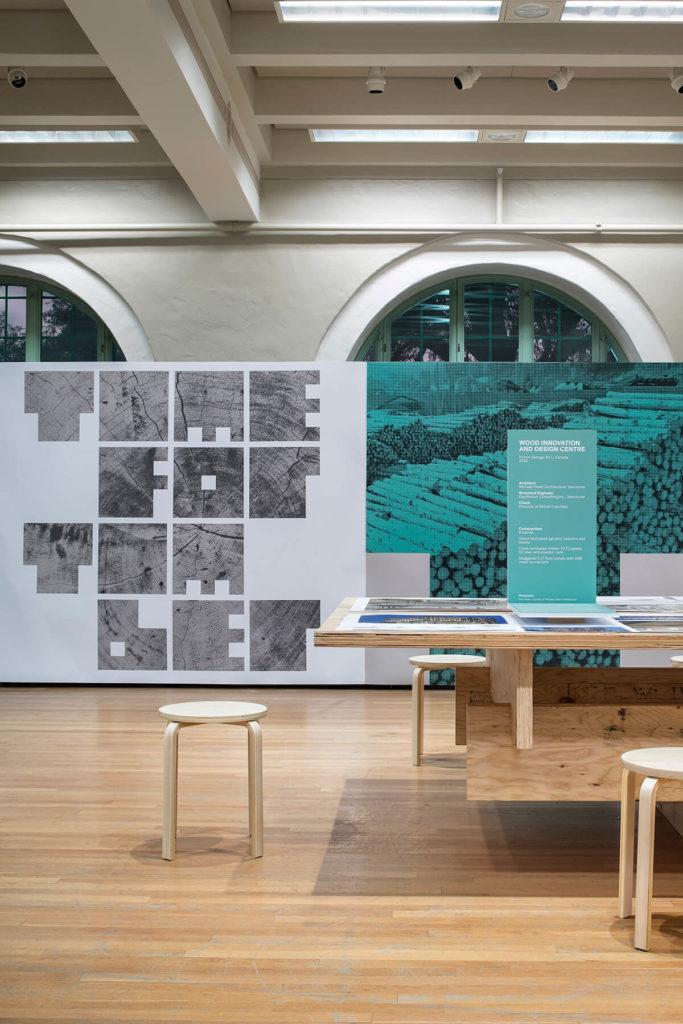Time for Timber
“The 17th century was the age of stone. The 18th century was the peak of brick. The 19th century was the era of iron. The 20th century was the century of concrete. The 21st century will be the time for timber.” — Alex de Rijke, dRMM
“Time for Timber”, an exhibition on the latest mass timber construction technologies, will be on display October 4 through November 22 in the Commons area of Vol Walker Hall on the University of Arkansas campus. It will provide a backdrop for the Design Excellence in Timber and Wood Summit Workshop, which is being hosted by the Fay Jones School of Architecture + Design from October 4 to 6.



Photography Credit: Paul Finkel of Piston Design
The exhibit is based on the premise that our society is currently faced with two significant challenges: human-made climate change and the need to provide housing for an ever-increasing world population. Since the Industrial Revolution, we have relied on steel and concrete as the primary building materials for the construction of our cities. Their refinement and processing require large amounts of energy, which is mostly generated by the burning of fossil fuels. As a result, carbon that has been stored for millions of years has been released into the earth’s atmosphere within a relatively short period of about 150 years in the form of carbon dioxide, contributing significantly to the climate shift we are experiencing today. The manufacture of cement, the key ingredient of concrete, in particular, emits one ton of carbon dioxide for every ton of cement produced and constitutes one of the most polluting processes in today’s construction industry. To provide sufficient housing for future generations, while at the same time lessening the impact on our environment, we must rethink the way we build.
Wood is a truly renewable building material that is unlimited in supply if its growth and harvest are sustainably managed. Trees store carbon through photosynthesis as they grow, simultaneously releasing oxygen. When wood decays or burns, it only releases as much carbon dioxide into the atmosphere as has been bound during its growth, therefore completing a carbon neutral life cycle. The latest innovations in engineering allow for the use of timber in the construction of multi-story and long-span structures. By replacing steel and concrete with timber, our buildings and cities can become carbon sinks rather than becoming sources for CO2 emissions.
“Time for Timber” argues for the increased use of wood as an alternative to more fossil-fuel intensive building materials by showcasing six innovative mass timber structures in North American and Europe. Each of the projects has been carefully chosen based on its unique approach to sustainable building practices. The presented buildings were designed by Lever Architecture (Portland), Michael Green Architecture (Vancouver), Acton Ostry Architects (Vancouver), Waugh Thistleton Architects (London), Kaden Klingbeil Architekten (Berlin), and Lattke Architekten (Augsburg).
The exhibit was designed and curated by Uli Dangel, Associate Professor and Program Director for Architecture at The University of Texas at Austin. Dangel’s research and teaching focus on the use of wood in construction, its influence on building culture and craft, and how it contributes to the advancement of sustainable practices at the scale of local and global economies. Birkhäuser Basel published his books Sustainable Architecture in Vorarlberg: Energy Concepts and Construction Systems and Turning Point in Timber Construction: A New Economy in 2010 and 2017 respectively. The exhibition was supported by the UT School of Architecture’s Center for American Architecture and Design (CAAD) and its Lectures and Exhibitions Committee.

